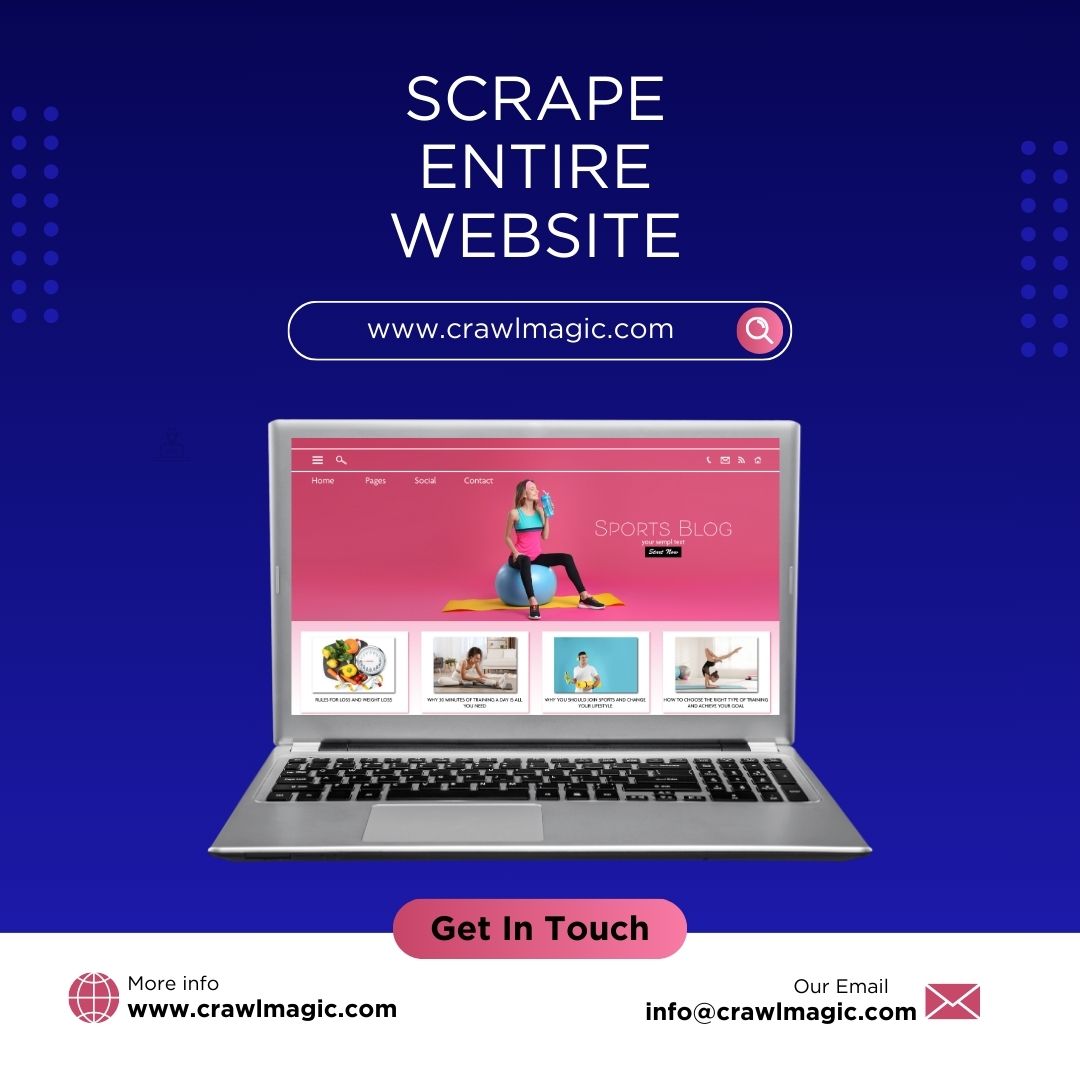In today’s digital era, accessing vast amounts of data from websites is a powerful skill. Whether you’re a business owner, researcher, or a tech enthusiast, understanding the optimal way to scrape an entire website can be a game-changer. Let’s delve deep into this exciting topic.
Unraveling the Concept of Web Scraping
Web Scraping Simplified
At its core, web scraping is the process of extracting data from websites. Think of it as copying and pasting information, but on a larger and automated scale.
Why Scrape a Website?
Web scraping has a multitude of applications:
- Market Analysis: Businesses can monitor competitors, track price changes, and assess product reviews.
- Academic Research: Gathering data from various sources to compile comprehensive research.
- Content Aggregation: Bloggers and news platforms might collect articles and posts from multiple websites for a summarized view.
Best Practices for Web Scraping
Selecting the Right Tools
Your tools can make or break your web scraping experience. For those starting out:
- Python: Known for its simplicity, Python is a top choice for web scraping.
- Beautiful Soup and Requests: These Python libraries are both user-friendly and efficient for data extraction.
Understanding Web Structure
Before diving into the scraping process, familiarize yourself with the basics of HTML. Recognizing common tags like headings, paragraphs, and links will greatly benefit the extraction process.
Step-by-Step Guide to Scrape a Website
1. Sending a Request
Your first step involves asking the website for its data. Tools like Python’s Requests library make this simple.
2. Dive into the Content
Upon receiving the website’s data, it’s time to sift through and pinpoint the exact information you need. Here, the Beautiful Soup library can assist, allowing you to navigate the website’s structure seamlessly.
3. Navigating Multiple Pages
If a website has several pages of content, ensure you can move through them systematically. This might involve tracking URL patterns or following links.
4. Safeguarding Your Data
Once you’ve captured your data, select a storage method that fits your needs, such as databases, spreadsheets, or plain text files.
Ethical Web Scraping: A Must-Have Approach
Respecting Website Guidelines
Always keep an eye out for a website’s robots.txt file. This file outlines what you can and can’t scrape, ensuring you’re collecting data respectfully and responsibly.
Prioritizing Ethics in Data Collection
With the ability to gather vast amounts of information, it’s crucial always to prioritize ethical considerations. Ensure you’re only accessing information you have rights to and using the data for positive, constructive purposes.
Continuous Learning: Staying Updated
Engage and Grow with the Community
The world of web scraping is expansive and ever-evolving. Join online forums, attend workshops, or participate in webinars. Engaging with fellow enthusiasts will provide fresh insights and innovative solutions.
Keep Your Tools and Skills Sharp
Web technologies change rapidly. To ensure you’re scraping effectively, regularly update your tools and refresh your skills.
In the vast realm of the internet, web scraping offers a bridge to connect individuals with the data they seek. By using the right tools, adopting ethical practices, and committing to continuous learning, anyone can master the art of web scraping and unlock the endless potential of the digital world.

